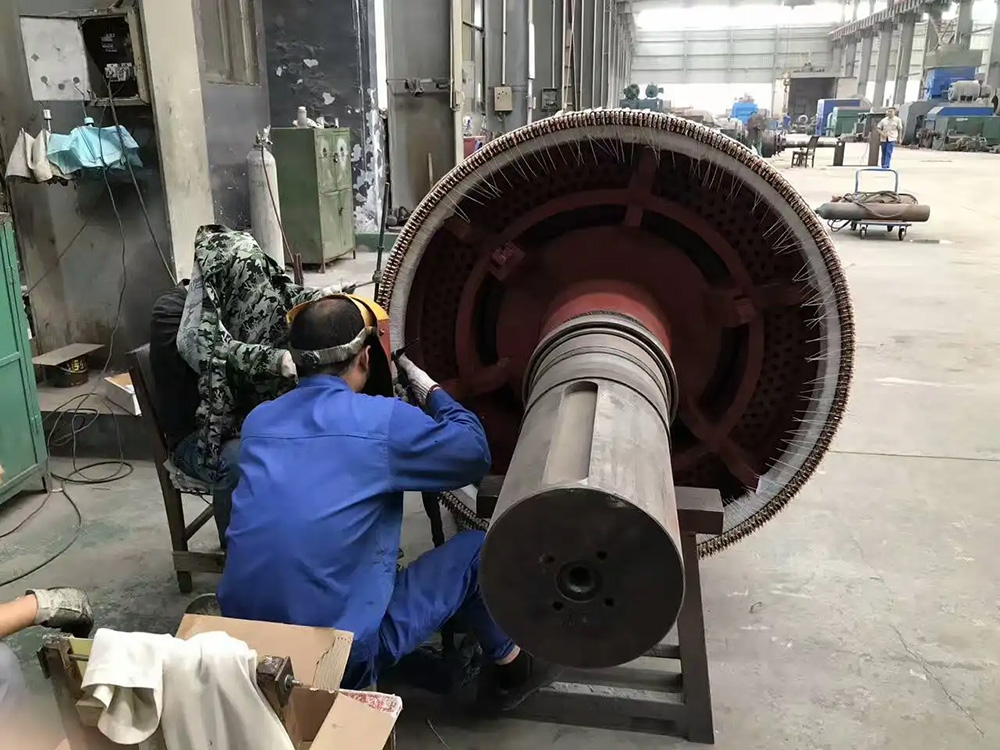Monitoring Method In Running Of Three-phase Asynchronous Motor
What are the main contents of monitoring during motor operation? Pay attention to the temperature and loudness of the bearing part. If the temperature rises and the sound is abnormal, the bearing may lack oil or wear. If the center of the motor driven by the coupling is not properly aligned, it will make noise during operation, accompanied by motor vibration and rapid wear of the coupling bolt gasket.
The condition of the motor in operation can be shown by the surface features such as the size of the motor current, the level of temperature, and the difference in sound, so electricians can monitor and detect through the eyes, ears, hands, nose, and instruments and tools at the same time. , If any abnormality is found, it should be shut down in time for processing and troubleshooting.
For the motor in operation, it should be checked frequently for cracks in its outer casing, whether the screws are falling off or loose, and whether the motor has abnormal noise or vibration. When monitoring, special attention should be paid to monitoring whether there is smoke or abnormality in the motor. If you smell coke or see smoke, you must immediately stop the machine to check and deal with it.

(1) Monitor the temperature of the motor. The running motor will generate heat, and its temperature rise should not exceed the allowable limit on the nameplate. Most of the faults of the motor will increase the stator current and increase the temperature. Therefore, if the temperature of the motor is found to exceed the allowable value, it should be stopped immediately for inspection, and the cause of serious heating should be found out. The following methods are commonly used to check the temperature rise of the motor:
1) Touch by hand. For medium and small capacity motors, touch the outer casing of the motor with the back of your hand. If it does not feel hot enough to shrink your hands, it means that the motor is not overheated. If it is too hot to shrink your hands immediately and is unbearable, it means that the temperature of the motor has exceeded the allowable value.
Touching the casing of the motor with the back of the hand instead of the palm is to prevent the back of the hand from getting rid of the charged casing more easily than the palm of the hand when the casing is electrified. In order to prevent electric shock, it is best to use an electroscope to check whether the case is live before touching the case.
2) dripping water. Drop a few drops of water on the casing, if you see hot gas but no sound, the motor is not overheated; if there is hot gas and a “hissing” sound is heard, the motor is overheated and the temperature rise has exceeded the allowable value.
3) Measure with a thermometer. This is a more accurate and intuitive method, using a glass thermometer (0 ~ 100 ℃) to measure. When measuring, first unscrew the lifting ring screw on the top of the motor casing, insert the thermometer into the lifting ring hole, and then plug the lifting ring hole with thermal insulation materials such as cotton yarn. The measured temperature is the surface temperature of the winding, which is about 10°C lower than the temperature of the hottest spot of the winding. Adding 10°C to the measured temperature is the actual temperature of the hottest spot of the winding. The actual temperature minus the ambient temperature at that time is the temperature rise of the motor during operation.
In fact, when the motor is running, the temperature rise exceeding the maximum allowable value is the accurate signal of the motor failure.
(2) Monitor the running current of the motor. In general, the current of the motor during operation should not exceed the rated current specified on the nameplate. For a motor with an ammeter installed, a red line of the rated current can be drawn on the ammeter. Small motors without an ammeter should also regularly measure the three-phase current with a clamp ammeter. In addition, attention should also be paid to whether the three-phase current of the motor is balanced, and the current difference between any two phases should not be greater than 10% of the rated current, otherwise the motor is faulty.
(3) Monitor the change of the power supply voltage. The power supply voltage variation range should not exceed or be lower than 10% of the rated voltage. If it is lower than this range, the load operation should be appropriately reduced. At the same time, the three-phase voltage imbalance should not be too large, and the difference between any two-phase voltage should not exceed 5%, otherwise the motor will heat up too fast. The motor power supply is best equipped with a voltmeter and a voltage commutation switch to monitor the three-phase voltage at any time.
(4) Monitor the sound, vibration and smell of the motor in operation. When the motor is running normally, the sound is uniform, the operation is stable, and there is no burnt smell. If abnormal sound, violent vibration, or smell of burnt insulating paint are found, it means that the motor is overheated or has other faults.
(5) Monitor the working condition of the transmission. Always pay attention to whether the pulley or coupling is loose, the conveyor belt has no slippage (the slippage is caused by the belt being too loose), and whether the belt joint is in good condition.












